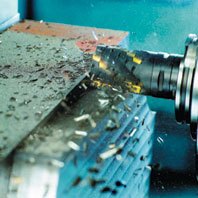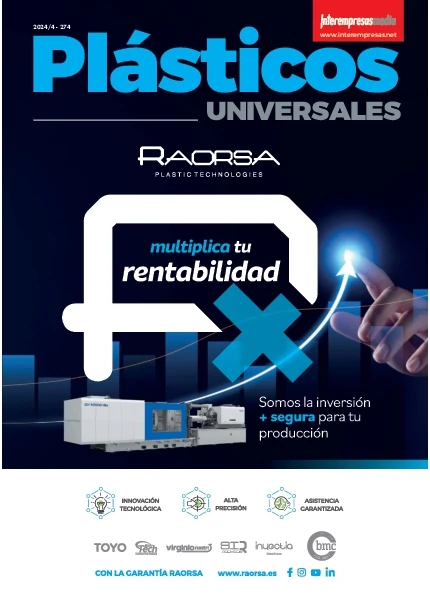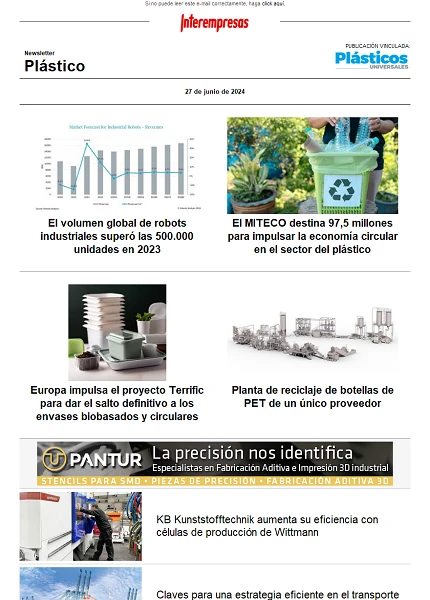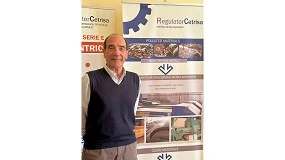New levels of productivity and reliability in the turning of stainless steel

Machining of stainless steel is an area that is undergoing constant growth.
The turning of stainless steel is used both in very small parts of Switzerland mechanization and the huge parts of flange of the processing industry; Since components of pump up links. To be able to adapt to different applications of the components, stainless steel varies considerably in terms of properties and Machinability, some types are much easier to develop machine than others.
By turning of stainless steel, it largely dispel doubts in the tooling, which is a task that corresponds to the production of the whole metal industry personnel.
Often, following doubts arise unexpected problems that may result in interruptions of the work and production losses. As for machining, the task of selecting the appropriate cutting (indexable insert) tool and apply it properly requires extensive experience due to the large number of variables that are part of an operation: parts materials, advances in tools, subject of tools/pieces of work, coolant, details of court, etc. In producing cutting tools, it is necessary to know properly both the action and the procedure for Court carried out the edge in the material as previous experiences and new experiences of applications, to be able to thus develop a tool less prone to wear little conducive.
Continuous development of tool materials
Continuous development is the result of major investments in r & d, but also in a staff of specialists who work closely with workshops of machines in all manufacturing industries that produce machining of metals. This has ensured a thorough knowledge of areas such as the turning of stainless steel and has led to concrete actions for the development of new chips. This fact has contributed to go a step further in the development of qualities of plates to optimize the turning of stainless steel in accordance with the current needs of production.
Determination of machinability
In addition to the chemical composition of the material, factors such as the production of stainless steel or choice of the diameter of the bar of the piece for the implementation will influence the machinability. The choice of the progress of the tool with an unfavourable departure may reduce the useful life of the tool of the plates halfway; the use of an old tool can create vibrations that cause fractures at the cutting edge; and a change in the supply of coolant adversely change the mode of wear and tear of the quality that you are using.
In the current process of metal cutting, the cutting edge geometry and the material of the tool are developed so that they work together in order to obtain optimal levels of factors such as efforts to courtheat generation and control of shavings. In stainless steel, reducing efforts of court is of the highest priority. This is due to the heat that is generated to deform the metal and the reduced amount of heat that comes with chips, so temperatures rise considerably in the area of Court of the Insert. The temperature of the cutting area is considerably elevated in the machining of stainless steel (materials ISO M) than in the machining of steel (materials ISO P), especially at high cutting speeds. Also, because of the hardening strain and adhesive properties of stainless steel requires greater tenacity in the material of the tool.
Strain hardening and ductility of stainless steel, along with the relatively low thermal conductivity in the austenitic metal phase, direct the progress of the load on the cutting edge and therefore the type and degree of wear and life of the tool. In order to reduce the magnitudes of court efforts and provide appropriate control of shavings on the edges of cutting geometries macros and micros carefully designed and adapted to the turning of stainless steel, the indexable plates have been manufactured to provide ample capacity in all the grades for stainless steel. For each application the quality of material varies considerably with regard to the properties and Machinability
Thanks to the progress of the machinability stainless steels such as SANMAC, which contribute to the improvement of productivity, have improved.
The point of view of the workshop of machines
It is important to take into account the properties of the tools, since almost half of the breakdowns of the cutting edges is due to the tenacity of the tool or the lack of resistance to the generation of heat in the cutting edge. Therefore, the above mentioned cases are a problem hidden reliability and not so much a problem of tenacity.
Lately, the newly designed GC2025 has been the quality of insert choice for turning of stainless steel. This plate has been redesigned giving it greater capacity. It therefore provides more opportunities for higher productivity, and to ensure a high level of reliability.
The development of qualities of tungsten coated carbon plates has significantly increased the performance and is no different in the case of the GC2025. The objective has been to provide a quality of insert applicable to a wider area - same quality for all operations - if possible, and with a higher level both in performance and safety of machining.
New quality of insert
It is also necessary that chip breaking capacity is higher in the machining of stainless steel in order to ensure the control of shavings in a wide area of court data.
The substrate of the insert should provide an appropriate basis for the coating and ensure a proper adhesion. On the basic properties of the substrate of tungsten of carbon, in which cobalt provides tenacity and material tungsten resistance of carbide for the thermal load and deformation, it is considered that the thickness of the grainespecially that of the tungsten carbon is very important in defining the behavior of the tenacity of the Insert. Thus, a grain of large size provides better tenacity than one of small size.
The domain of different aspects of the material and processes forms the basis for optimal performance of the coated indexable plates. Currently, the development of the substrate of the plates is based on choosing the best combination to help absorb the cracks and be strong enough to the local plastic deformations to the coating. It is also very important to carry out a process control and purify duly substrates of the chips in production so that the coating adheres and extends in a controlled manner.
It may also, in the furnace of sintering atmosphere that is relatively reactive gas ronde and even pass of the melting point of the temperature of cobalt or the surface state of the chips that are underway in the production chain.
Multilayer coatings
The top coating of GC2025 is a layer of Titanium Nitride (TiN Golden and fine). It works mainly as a marker for edges of Court are used in the Insert, and clearly indicates the wear, and to improve the properties of friction of the surface of the Insert.
The following coating, below the TiN coating, consists of a coating of oxide of aluminium (Al2O3). The latter is a multi-layered structure of alumina has interesting properties in mechanization. The mechanism of multi-layer efforts uses more energy to penetrate the coating. This process is carried out through the diversion of fissures and the absorption of energy in each sub-capa - in a way very similar to the role of building sandwich in the aerospace industry, etc.
Effective barriers against failures of plates
As the basis for the coating of plates had been incorporated into the substrate a layer of titanium carbonitruro chemical deposition of steam of medium temperature (MTCVD-TiCN). The structure of this coating is also interesting, because its grains are grown as columns. This provides a good resistance to wear, because all the grains are held each other in the structure of column. This means that wear occurs through a number of grains which do not start and therefore do not propagate cracks. The result is a remarkable extension of the life of tool in the applications on them are expected a short tool life.
In addition, the intrinsic properties of each layer of coating provide resistance against the formation of shavings attached at the edge of the tool as well as other spotting trends.
The accession of the material of the piece to the Insert implies that material alternates between sticking off the ground, damaging the tool cutting edge. The new coating provides critical limits in each layer and this influences the fundamental properties of the subsequent layer.
With the development of the GC2025, is no longer impossible to have a unique quality to most, if not all, applications of a workshop of machines. This quality has shown some promising results in the turning of different grades of stainless steel. This, along with the ability of the machining with details of court rather taller and to high levels of reliability of process - creates the basis for an insert suitable for most, if not all, the tornado of stainless steel operations.
Tips to improve the turning of stainless steel
- During programming, taking into account that the surface of the bars has values of hardness higher than the Center and spotting trends to increase towards the center of the bar (especially when the speed of the spindle of the machine limit is reached)
- Change the cradles often use geometries of different indexable plates and loads of court with the same portaherramienta
- For intermittent cuts, reduce or remove the cooling liquid.
- Please contact a dealer of cutting tools to provide a service of support for applications, etc.
- Reduce variations in the machinability by limiting the number of suppliers of materials.
Requirements for the cutting tool
The hardness of the material of the work piece affects the service life of cutting tools. A material hard often requires that it decreases the cutting speed to keep the useful life of the tool. Stainless steel hardens by deformation when it stretches in cold, as the austenitic that hardens more. Even the bars that have been deskewed stretch out cold to some extent, with values of hardness of surface of 300 HB or more, even if the material inside has half of the specified hardness. Chromium influences very little machining compared to nickel and molybdenum. This, above all, causes more hardening strain. The metal itself cut implies certain drawing cold. Deformation-hardened layer is much thicker in the stainless steel austenitic than in carbon steel. It is often more advantageous to select a depth of cutting and speed which ensures that the cutting edge penetrates the material hard zone.
The thermal conductivity has an important role in the cutting of metal, in the sense that most of the heat of the cutting area is eliminated with the chips during machining of steel. However, the stainless steel has a thermal conductivity poorest, leaving more heat in the area. These higher court temperatures increase the tendency for wear of the tool. The plastic deformation is also a high risk factor. A positive geometry and a rompevirutas open with a much more fluid and smooth chip breakthrough means less heat.
Ductility is a factor that requires much the ability to break chips on steels with low percentage of carbon. However, the austenitic steels are also highly ductile and need much energy to cut a chip, with the consequent increase in heat.
The formation of burrs is another feature of the machining of stainless steel and is often caused by a cut excessively hard. You can reduce or eliminate this possibility by using an edge with more positive and sharp cutting more appropriate for this type of material.
There are several factors that combine to make the machining of steel is more demanding. A hardening strain and a thermal conductivity and ductility poor mean that it must take into account the selection and proper application of cutting tools developed specifically for stainless steel. Also take into account the conditions of machining and the good condition of the machine tools.
A positive insert means a court and a more continuous progress of chip with fewer variations in forces Court and lower temperatures and less hardening by deformation of the material.
An more sharpened cutting edge means a softer cutting with a lower force action and less formation of burrs in the pieces of work. The most sharp edge leads to less deformation of the material of the piece of work. It was discovered that an edge of court positive and sharp, combined with an open rompevirutas correctly balanced, is the best solution for the machining of stainless steel. However, these features must be weighed with the need to achieve a stability and a force of sufficient in the process of machining edge. This insert has to be well held with sufficient covers media and have cutting edges reinforced as well as intermittent cuts.
At the time of hardening by deformation of the surface of the component, the austenitic and the Super austenitic are the most sensitive, followed by duplex steels. Shear forces are highest in Super austenitic, duplex steel machining as well as Martensitic steels. With regard to the action of cutting, the formation of shavings and the ability to break, Super austenitic and duplex steels are the most demanding followed by the austenitic.


































